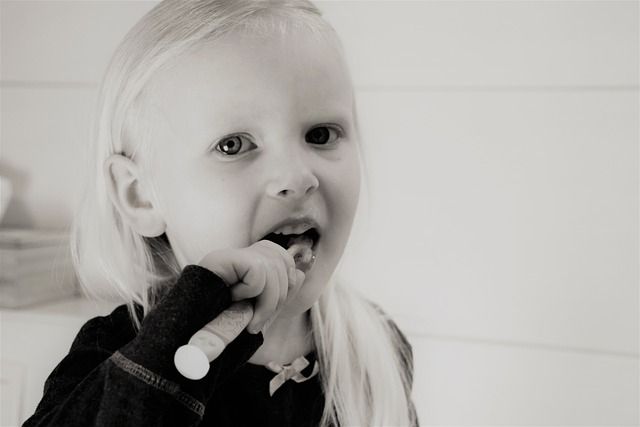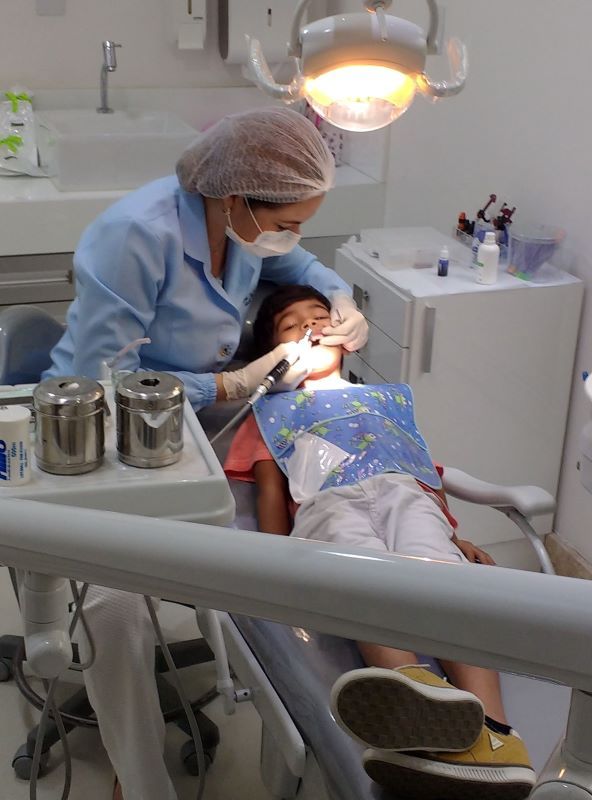Scientist Develops a New Dental Treatment for Children
Researcher is working on a biodegradable and biosynthetic space maintainer that has many benefits to prevent the loss or breakage of primary molars in children. The goal is to avoid malocclusion and promote healthy teeth.

In Mexico, the incidence rate of childhood caries is high (75 percent), and the most damaged teeth are the primary molars (or "milk teeth"). Iztacala, which is part of UNAM's Faculty of Higher Studies, is making a space maintainer that has a lot of benefits to stop them from being lost or broken.
Cecilia Carlota Barrera Ortega, head of section at the Acatlan Dental Clinic of the university, explained that the laboratory is working with a commercial synthetic polymer called polycaprolactone, which is biodegradable and biosynthetic. Its benefits are that it can be made with a new, aesthetically pleasing, and functional material at a lower cost, and it can be put in place in a single visit without having to be made in a dental lab.
This material is made functional by adding nanoparticles of different metal oxides. "At the Laboratory for Research in Nano and Dental Biomaterials, we carry out the synthesis of such nanoparticles (tiny, approximately 25 nanometers) to give this kind of scaffold the properties of being antimicrobial and radiopaque (i.e., since it is not crossed by X-rays, it is visible in the X-ray as a white area)."
The goal is to get a space maintainer for kids who have lost baby teeth or molars because of early caries and need to have them replaced. If they don't, when their permanent teeth come in, they will have malocclusion, which is the second most common disease in kids after caries.
The scaffolds are made to be put in places where there are a lot of bacteria. Over time, the polymers break down, and when they do, they release nanoparticles that are not toxic but have antimicrobial properties that help reduce caries and the biofilm called dentobacterial plaque.
In the scientific literature, there are numerous metal oxide nanoparticles with this capacity; however, not all of them are useful. Copper nanoparticles, for example, have good antimicrobial properties, but they stain black and would not be aesthetically pleasing to place in a patient's mouth. For this reason, zinc oxide, magnesium, and bismuth were chosen.

The specialist in pediatric dentistry, as well as the teacher and doctor of science, pointed out that this is the first time that an attempt has been made to give these materials an application of this type. " Polycaprolactone has been used to create electrospinning meshes, which allow cells to "walk." "What we are developing is a bulk or block, to which different nanoparticles are added to see their antimicrobial effect for several days and then put in a biological medium."
In the first phase, the research consists of "doping" or "functionalizing" the polymer with the nanoparticles and testing it with cells. It will then be put in contact with bacteria, tested in an animal model, and eventually used on patients. When a child has an infection but can't take antibiotics for a long time because of the infection, a non-invasive intramucosal space maintainer is used to hold the piece in place. The piece is then removed to avoid making the situation worse.
In infants from three to four years of age, this scaffold may be required so that the space remains available for the permanent molar that is not yet going to erupt, and when the replacement comes, it will be done in a normal way. In this case, the advantage would be to have a maintainer that degrades with time and avoids infections.
Polycaprolactone has one more benefit: it can be manipulated because its melting point is only 60 degrees Celsius; "we don't burn ourselves, and with the nanoparticles already embedded, we could place it in the patient in a single appointment; based on his craniofacial growth and a previous X-ray, it is designed at that very moment."
Up until now, metal space maintainers have been used, and two appointments are required because they are sent to a laboratory to be made. In this case, the behavioral management of the pediatric patient is not trivial, Barrera Ortega stressed, and even less so if he or she is in pain or has had poor previous treatment.
In this situation, it would be unnecessary to change the scaffold while the definitive tooth emerges; it could only be monitored radiographically, as established by the ISO-4049 standard. By using the polymer with the metal oxide nanoparticles and a radiograph, we can know the condition of the material over time.
The study at the Laboratory of Research in Dental Nano and Biomaterials, where human resources of excellence are trained, especially in pediatric stomatology, and where students from the dental surgery, engineering, physics, and chemistry careers are housed, is in the phases of basic science, functionalization, and physical, chemical, and biological characterization.
"We already know a lot about the physical characteristics of the nanomaterial, in terms of hardness, elasticity, and roughness." "Its chemical properties have also been characterized." Using X-ray diffraction, we confirmed that the nanoparticles used are the ones we wanted and are the right size. "Infrared and Raman spectroscopy have also been used."
The biological characterization of the material with Staphylococcus aureus bacteria and with stem cells of mesenchymal origin (multipotent) follows. The goal is to give people a way to make money, to keep kids from being handled roughly, and to stop people from having bad teeth.
The university expert advised parents to take their children for a dental check-up every six months with a pediatric dentist who specializes in treating them. Also, they should help them brush their teeth and show them how to do it so that when the kids see them brushing their teeth, they will do it too.




